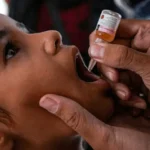Bacterial and Viral Infections: Causes, Symptoms, and Essential Prevention TipsBacterial and viral infections are among the most common causes of illness, but they are often confused due to overlapping symptoms. However, understanding the distinctions between these infections is crucial for proper diagnosis, treatment, and prevention. This guide provides detailed insights into what makes bacterial and viral infections different and how you can protect yourself and your loved ones.
What Causes Bacterial and Viral Infections?
Bacterial infections are caused by bacteria—microscopic, single-celled organisms that can live in various environments, from soil and water to the human body. Some bacteria are beneficial, like those in our gut, but others can cause illnesses such as strep throat, pneumonia, and urinary tract infections (UTIs). Bacteria can spread through direct contact with an infected person, exposure to contaminated surfaces, or through the air via droplets.
Viral infections, on the other hand, are caused by viruses—much smaller than bacteria and requiring a living host, such as a human cell, to multiply. Viruses are responsible for illnesses like the common cold, influenza, and more serious conditions like COVID-19 and HIV/AIDS. Viruses spread through similar methods as bacteria, including respiratory droplets, bodily fluids, and touching surfaces contaminated with the virus.
Also Read: 12 Effective Home Remedies for Bad Breath
Recognizing the Symptoms of Bacterial and Viral Infections
The symptoms of bacterial and viral infections can overlap, making it challenging to differentiate between the two without medical testing. However, there are some general trends:
- Bacterial Infections: These often cause more localized symptoms. For example, bacterial infections can lead to a sore throat in strep throat, painful urination in UTIs, or skin infections characterized by redness, swelling, and pus. Fever, fatigue, and specific pain are common but typically tied to the affected area.
- Viral Infections: Viral infections tend to cause more systemic symptoms, such as widespread body aches, fever, and fatigue. Additional symptoms may include a runny nose, cough, and congestion, as seen in colds and flu. Viral illnesses can also lead to more severe outcomes if the immune system is overwhelmed, such as in cases of COVID-19.
Also Read: YouTube and AdSense Monetization Suspended in Russia: Impact on Content Creators and Digital Media
Treatment: Bacterial vs. Viral Infections
The treatment approach for bacterial and viral infections differs significantly due to their distinct nature:
- Bacterial Infections: Antibiotics are the primary treatment for bacterial infections. These medications are designed to kill bacteria or inhibit their growth. It’s crucial to complete the full course of antibiotics, even if you feel better, to ensure the infection is fully eradicated and to prevent the development of antibiotic-resistant bacteria.
- Viral Infections: Antibiotics do not work on viruses, so treatment focuses on managing symptoms and supporting the body’s immune response. This might involve rest, fluids, and over-the-counter medications for pain and fever relief. In some cases, antiviral medications are prescribed, but these are virus-specific and not as commonly used as antibiotics. For certain viral infections like the flu, vaccines are a key preventive measure.
Prevention Strategies for Bacterial and Viral Infections
Preventing bacterial and viral infections involves several key strategies:
- Hygiene Practices: Regular handwashing with soap and water is one of the most effective ways to prevent infections. Avoid touching your face, especially your eyes, nose, and mouth, with unwashed hands.
- Vaccinations: Vaccines are crucial for preventing many viral infections, including influenza, measles, and COVID-19. Vaccines stimulate the immune system to recognize and fight specific pathogens, providing immunity without causing the disease.
- Healthy Lifestyle: Maintaining a strong immune system through a balanced diet, regular exercise, and sufficient sleep can help your body resist infections.
- Avoiding Contact with Sick Individuals: If possible, avoid close contact with people who are sick. If you are ill, stay home to prevent spreading the infection to others.
- Disinfecting Surfaces: Regularly clean and disinfect frequently touched surfaces, such as doorknobs, light switches, and mobile devices, especially during flu season or an outbreak.
Understanding the differences between bacterial and viral infections is essential for effective treatment and prevention. By knowing the causes, recognizing symptoms, and following appropriate treatment protocols, you can reduce your risk of complications and spread of these infections. Incorporating preventive measures into your daily routine can help protect your health and the health of those around you.
Disclaimer: This article provides general information and is not intended as a substitute for professional medical advice. Always consult a healthcare provider for guidance on specific health issues. MahabharatTimes does not assume responsibility for the accuracy of the information provided.













